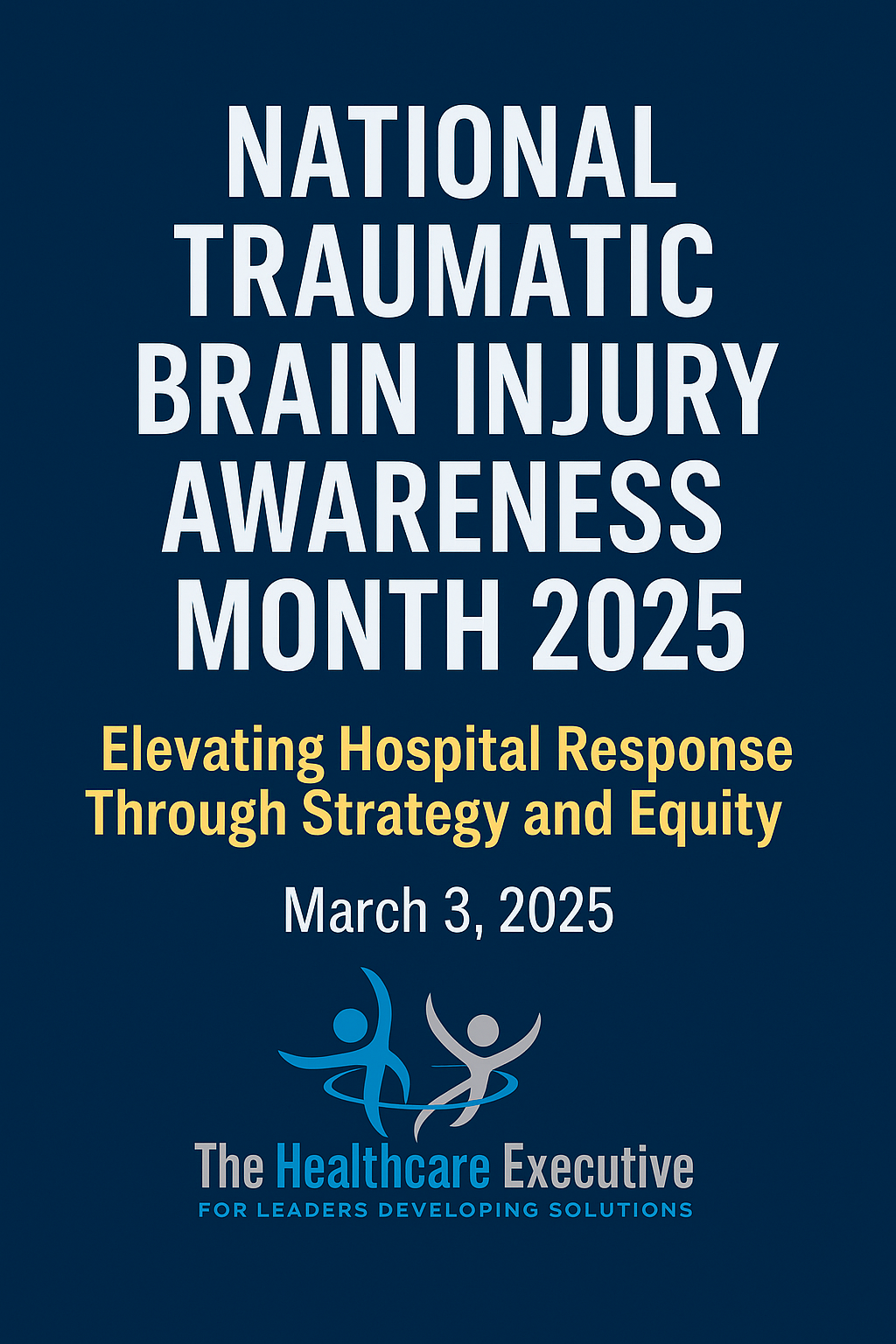National Traumatic Brain Injury Awareness Month 2025: Elevating Hospital Response Through Strategy and Equity

- Posted by Greg Wahlstrom, MBA, HCM
- Posted in Health Observance Calendar
Executive Leadership Must Advance Trauma Systems, Rehabilitation Access, and Long-Term Recovery Planning
Published: March 3, 2025
Each March, National Traumatic Brain Injury (TBI) Awareness Month reminds healthcare leaders of their pivotal role in reshaping trauma care. With over 220,000 TBI-related hospitalizations and more than 69,000 deaths annually in the U.S., the urgency to optimize trauma-informed care is unmistakable. Hospital executives must treat TBI not just as an acute event but as a continuum—from emergency stabilization to community reintegration. At University of Rochester Medical Center, interdisciplinary trauma protocols now begin in the ED and extend through inpatient rehab, care navigation, and outpatient tele-rehabilitation. This coordinated approach is a model for executive-level systems design that treats time, equity, and function as measurable performance domains.
Trauma systems vary significantly across regions, resulting in inconsistent access to TBI specialists and rehabilitation pathways. At RWJBarnabas Health, executives launched a hospital-based neurorecovery unit to close the care gap between trauma stabilization and functional rehab. Leaders must evaluate their trauma center designations, neurology staffing models, and referral data to ensure timely, comprehensive treatment. Rehabilitation investment is no longer optional; it is a strategic imperative to reduce readmissions, improve quality scores, and support patient recovery. TBI recovery spans months or years—yet few systems offer coordinated longitudinal care. Hospital leaders can change that.
Equity in brain injury care remains a critical gap. Black and Hispanic patients are more likely to experience delayed treatment and are underrepresented in clinical trials and post-acute rehab programs. The Brain Injury Services Health Equity Initiative highlights disparities in emergency response times, diagnostic imaging, and therapy access. Executives must embed equity analytics into TBI dashboards and adjust care pathways accordingly. This includes multilingual discharge instructions, bias training for trauma teams, and Medicaid-funded rehab coordination. Hospital leaders must define equity as a clinical standard, not a soft goal, and hold departments accountable for disparities in TBI outcomes.
Technology offers new tools to extend TBI recovery beyond hospital walls. At Mayo Clinic, digital recovery plans and remote physical therapy modules help patients and caregivers manage recovery from home. Hospital executives should integrate wearable sensors, cognitive tracking apps, and virtual rehab platforms into their post-discharge strategy. These tools are not just enhancements—they are essential in addressing clinician shortages, transportation barriers, and continuity of care. Long-term TBI outcomes depend heavily on what happens after discharge. Strategic leaders must extend the care continuum with digital infrastructure and wraparound services that meet patients where they are.
National Traumatic Brain Injury Awareness Month 2025 challenges hospital executives to act boldly. TBI care must evolve from fragmented crisis response to integrated, equitable recovery. Executive teams must invest in trauma readiness, rehab leadership, real-time equity audits, and hybrid care models. As seen at Jefferson Health, co-located rehab units with trauma floors reduce length of stay and enable earlier therapy. Hospital leaders must prioritize seamless transitions, data-driven recovery, and trauma-informed culture as pillars of system success. Awareness is only the beginning—leadership must do the rest.
Discover More on Strategic Neurorehabilitation Leadership
Explore how your organization can reframe recovery timelines, equity analytics, and digital rehab tools to strengthen outcomes in post-trauma care.
Internal Links
- Hospital Leadership in Crisis: What Every CEO Must Do in 2025
- The Healthcare Workforce Crisis: Executive Solutions That Actually Work



